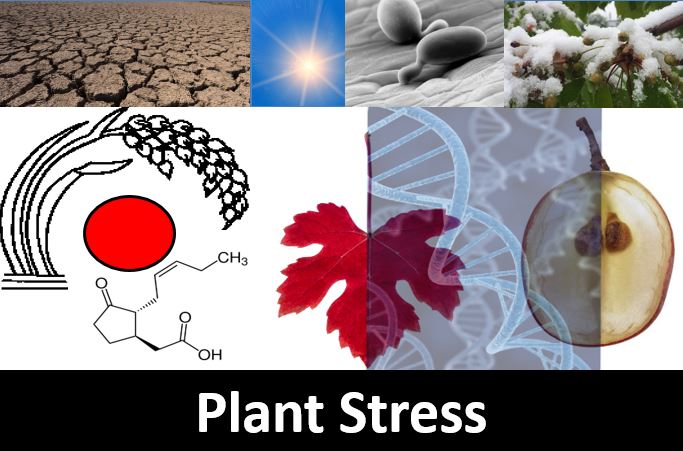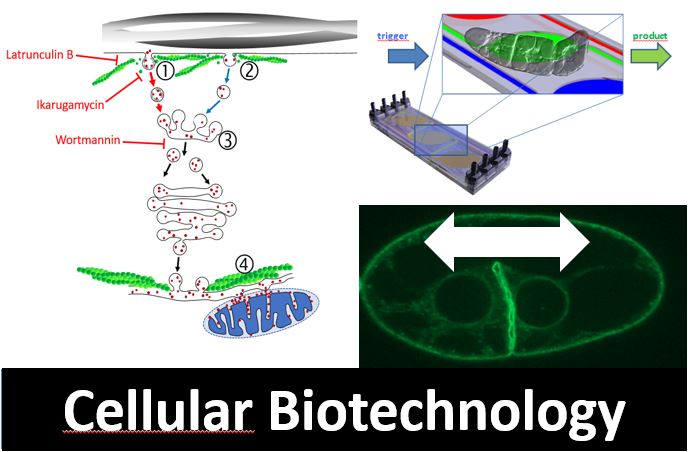Novidades
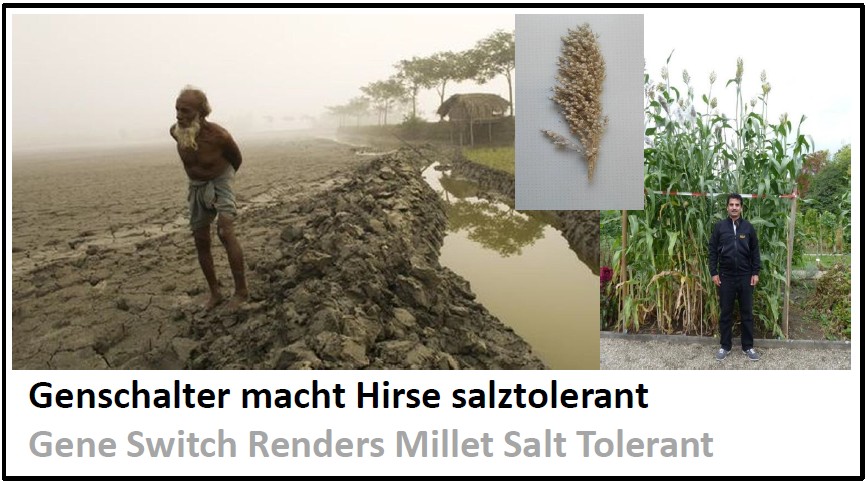 |
Salt Tolerant Sorghum MilletClimate changes makes sea levels rise making fertile coastal land salty. The Nile delta, Bangladesh, Vietnam, but also the South of Italy are already today confronted with salt stress. Can we find crop plants that are able to thrive on such soils? In the past, we have, initiated by our Syrian colleague Dr. Adnan Kanbar, focused on stress resilience in Sorghum Millet. This ancient crop originates from Sudan and can cope with harsh conditions. In fact, we were able to show that some Sorghum varieties not only can grow under salinity, but accumulate more sugar when confronted with salinity. What happens to this sugar, differs - some Sorghum varieties store it in the shoot, what is interesting for bio-economic use (for instance for the production of bio-ethanol) others store it in their seeds, what supports food security in regions affected by soil salinity. During her PhD our colleague Eman Abuslima from Egypt was able to uncover the reason for the different sugar use: a gene switch for the sugar transporter SWEET13 decides. A very active version of this switch could be identified in the old Syrian landrace Razinieh. By breeding, this switch can now be crossed into other millet varieties, and by means of the molecular knowledge, the promising individuals in the progeny can be recognised already in the seedling stage by a simple PCR. Publication 216. Abuslima E, Kanbar A, Ismail A, Raorane ML, Eiche E, El-Sharkawy I, Junker BH, Riemann M, Nick P (2025) Salt stress-induced remodeling of sugar transport: a role for promoter alleles of SWEET13. Nature Sci Rep 15, 7580 - pdf Media echo vbio - idw online - openpress - DBG - pugnalom - Ruhrcampus online |
|
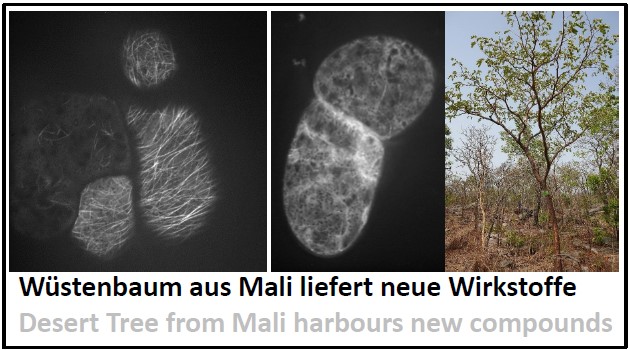 |
Tumour Compound from a Mali Desert TreeThe use of plants for healing accompanied humans from their very beginnings. Among the almost half a million of species that have already been described, there are many that produce unique compounds. Especially in developing countries many people depend on plants for healing, because they cannot afford the expensive Western style medication. The tree Detarium microcarpum growing in Mali is used in traditional medicine also against breast cancer. Many anti-tumour compounds target the microtubules, which blocks the proliferation of cancer cells. We, therefore, investigated, whether this is the case for this medicinal plant from Mali. Using tobacco cells, where microtubules were labelled by a fluorescent protein, and could demonstrate that, indeed, extracts from D. microcarpum eliminated microtubules swiftly and efficiently. The effect could be localised to the alkaloid fraction. On this base it will be possible to identify the active compound in the future, not only to develop novel tumour therapies, but also to lift traditional medicine by scientific grounding on a higher level.
Publication
Dembele N, Nick P (2024) Anti‐microtubular activity of total alkaloids and aqueous extract of Detarium microcarpum a medicinal plant harvested in Mali. Protoplasma 262, 415-430 - pdf
|
|
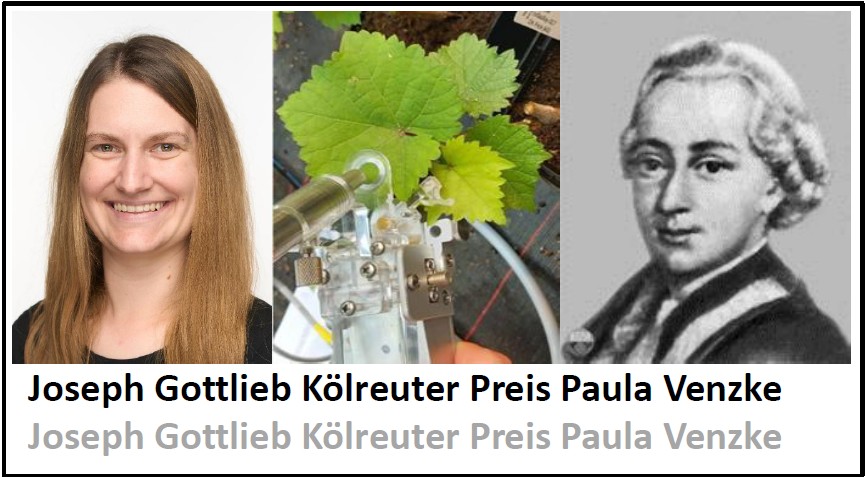 |
Joseph Gottlieb Kölreuter Award for Paula VenzkeSince 2021, the association Friends of the Botanic Garden at the KIT, announces the Joseph Gottlieb Kölreuter Award for Sustainability. It is dedicated for theses in the field of plant sciences that contribute to sustainability in agriculture, or nature and environmental conservation. This year it was Paula Venzke, who did her master thesis with us an with our partners at the IBMP in Strasbourg. Topic was climate change in viticulture. How can we cope the challenge of progressively hot summers by breeding novel KliWi varieties (for Klima-Widerstandsfähig, climate resilient)? How can we determine the climate resilience of current varieties on a scientific base? Paula Venzke conducted controlled heat-stress experiments at the JKIP Experimental Station and developed non-invasive techniques to monitor the physiological responses of grapevine. She could demonstrate that the popular variety Riesling has to buffer heat stress by opening its stomata, thus, losing a lot of water. In contrast, the wild grapevine Hördt 29 originating from the alluvial forests of the Old Rhine can tolerate higher leaf temperatures, such that it can economise the use of water. This work led to new insights and new methods to evaluate heat tolerance on a scientific base, also an important contribution for our Interreg Upper Rhine projekt Kliwiresse. Congratulations! |
|
↵


